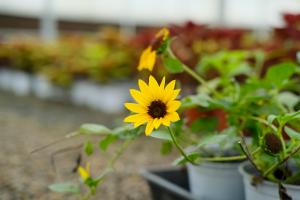When and How to Fertilize Tomato Plants
Tomato plants require proper care and attention to grow healthy and produce a bountiful harvest. One important aspect of the care routine is fertilization. Fertilizing tomato plants helps them develop strong roots, healthy foliage, and plentiful fruits. In this article, we will discuss when and how to fertilize tomato plants for the best results.
When to Fertilize Tomato Plants
Tomato plants require different nutrient levels at different stages of growth. Therefore, fertilization timing can make or break the success of the crop. Here are some guidelines:
Before planting: Before planting seedlings or transplanting, it is a good idea to add a slow-release fertilizer to the soil bed. This will help establish the roots and provide enough nutrients to keep the plants growing until the first feeding.
First feeding: Once the tomato plants have been in the ground for several weeks and have established some growth, it's time for the first feeding. This should happen around four weeks after planting or just before the plants begin to develop flowers.
Second feeding: The second feeding should occur once the tomato fruits have begun to set. This is usually around eight weeks after planting. At this stage, you need more phosphorus and potassium than nitrogen. Therefore, you must choose a fertilizer with a lower N value and a higher P and K value.
Third feeding: The third feeding should be given when the fruit is approximately half full size. This is usually around twelve weeks after planting. At this stage, tomato plants need fertilizer with a high potassium level to boost fruit size and quality.
How to Fertilize Tomato Plants
There are several ways to fertilize tomato plants:
Organic fertilizers: Organic fertilizers are the best choice for tomato plants. They're not only good for the soil, but also good for the environment. Organic fertilizers like compost, manure, and bone meal slowly release nutrients over time, enriching the soil and providing long-term support for the plants.
Water-soluble fertilizers: Water-soluble fertilizers are a quick way to feed plants that need a boost. They provide visible results within days, making them ideal for gardeners who want quick fixes. Make the solution according to the package instructions and use it to water the plants every other week.
Granular fertilizers: Granular fertilizers are best for gardeners who want to have more control over the amount of nutrients they give their plant. They slowly release over time, providing more sustained and even feeding. Applying granular fertilizer to the base of the plant and carefully mixing it into the soil is the best way to ensure that the roots get the nutrients they need.
Conclusion
Tomato plants need proper care and attention to develop strong roots, healthy foliage, and plentiful fruits. Fertilization is a crucial part of the care routine. By following the guidelines mentioned in this article and using the right fertilization strategy, you can ensure a healthy and bountiful tomato crop. Remember to always use organic fertilizers whenever possible, as they're not only good for the plants, but also good for the environment.

 how many times do yo...
how many times do yo... how many planted tre...
how many planted tre... how many pine trees ...
how many pine trees ... how many pecan trees...
how many pecan trees... how many plants comp...
how many plants comp... how many plants can ...
how many plants can ... how many plants and ...
how many plants and ... how many pepper plan...
how many pepper plan...






























